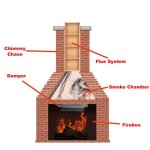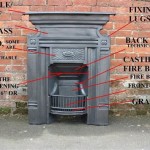A Comprehensive Guide to Stone Age Outdoor Fireplaces
The concept of an outdoor fireplace extends far back into human history. Before the sophistication of modern heating and cooling systems, fire provided warmth, light, and a central gathering point, especially in colder climates. Examining the construction and functionality of Stone Age outdoor fireplaces provides valuable insight into the resourcefulness of early humans and their intimate relationship with the natural environment.
Defining a Stone Age outdoor fireplace requires contextual understanding. The term "Stone Age" encompasses a vast period characterized by the use of stone tools, spanning from the earliest known hominin tool use (approximately 3.3 million years ago) to the advent of metalworking. Within this expansive timeframe, methods of fire construction and containment varied significantly based on geographic location, available materials, and cultural practices. Therefore, a singular, definitive Stone Age outdoor fireplace is a misnomer. Instead, a discussion requires an exploration of different approaches across various regions and time periods.
Fundamentally, a Stone Age outdoor fireplace served the same basic purposes as its modern counterparts: to provide a controlled space for creating and maintaining fire. The primary difference lies in the simplicity of construction and reliance on readily available natural resources. Stone served as the primary building material, providing a durable and heat-resistant barrier to contain the flames and prevent the spread of fire. The specific configuration of these fireplaces varied based on the needs of the community and the availability of suitable stones.
Stone Age Fireplace Construction Techniques
The method of constructing a Stone Age outdoor fireplace was largely determined by the local environment. In areas abundant with large, flat stones, early humans might have created a simple enclosure by arranging these stones in a circle or square. Smaller stones could then be used to fill gaps and create a more solid structure. The height of the enclosure would depend on the intended purpose. A low enclosure might have been sufficient for cooking, while a taller enclosure could have provided better protection from the wind and radiated heat more effectively.
In regions lacking easily accessible flat stones, other techniques were employed. Early humans might have dug a shallow pit and lined it with smaller stones or clay to create a fire pit. This method provided a more enclosed space for the fire, offering better protection from the elements. Alternatively, a simple windbreak could be constructed using piled stones, directing the heat and smoke away from the inhabitants. These windbreaks were often positioned strategically to take advantage of natural land formations for added protection.
The selection of stones was also crucial for the safety and longevity of the fireplace. Certain types of stone, such as sandstone and limestone, are more susceptible to cracking and crumbling under intense heat. Therefore, early humans likely experimented with different types of stone to determine which were best suited for fire containment. Igneous rocks, such as granite and basalt, are generally more resistant to heat and were likely preferred when available. The knowledge of which materials were safe and effective was passed down through generations, contributing to the development of increasingly sophisticated fireplace designs.
The interior of the fireplace was often prepared with a layer of sand or clay to further insulate the ground and prevent the fire from spreading. This layer also helped to reflect heat back into the fire, increasing its efficiency. Over time, the repeated use of the fireplace would often lead to a build-up of ash and charcoal, which themselves provided additional insulation and helped to regulate the airflow within the fire.
The Role of Fire in Stone Age Society
The outdoor fireplace was not merely a functional structure; it held significant social and cultural importance in Stone Age societies. Fire provided warmth, allowing early humans to survive in colder climates and extend their activities into the evening hours. It also served as a vital tool for cooking, transforming raw food into more digestible and nutritious meals. Cooking over fire also helped to kill harmful bacteria and parasites, improving overall health and well-being.
Beyond its practical applications, fire also played a central role in social gatherings and rituals. The fireplace served as a gathering place for families and communities, providing a focal point for storytelling, sharing food, and engaging in other social activities. The warmth and light of the fire created a sense of security and community, fostering social bonds and strengthening cultural identity. The fire was also often associated with spiritual beliefs and rituals, representing life, fertility, and the connection to the natural world.
The ability to control and maintain fire granted early humans a significant advantage over other animals. Fire was used to ward off predators, clear vegetation, and harden the tips of wooden spears. The use of fire also allowed early humans to expand their diet, as cooking made previously inedible foods palatable and nutritious. This increased access to resources contributed to population growth and the expansion of human settlements. The development of fire-related technologies, such as the fireplace, was therefore a crucial step in the evolution of human civilization.
Evidence suggests that different Stone Age cultures developed unique traditions and rituals surrounding fire. In some cultures, specific types of wood were used for different purposes, with certain woods considered sacred or possessing special properties. The way in which the fire was lit and maintained also varied, with some cultures employing elaborate techniques to ensure a continuous flame. These traditions highlight the deep cultural significance of fire and its central role in shaping Stone Age societies.
Variations in Stone Age Fireplace Design Across Regions
The specific design and construction of Stone Age outdoor fireplaces varied considerably depending on the geographic region and available resources. In mountainous regions, early humans often took advantage of natural rock formations to create sheltered fire pits. These natural shelters provided protection from the wind and rain, making it easier to maintain a fire. Stones would then be arranged around the opening of the shelter to further enclose the fire and direct the heat.
In coastal regions, early humans might have used seashells and driftwood in addition to stones to construct their fireplaces. Seashells, particularly large clam shells, could be used as cooking vessels, while driftwood provided a readily available source of fuel. The proximity to the ocean also influenced the types of food that were cooked over the fire, with seafood playing a significant role in the diet of coastal communities.
In arid regions, where wood was scarce, early humans relied on alternative fuel sources, such as animal dung and dried vegetation. The design of the fireplace would be adapted to accommodate these different types of fuel, often incorporating a deep pit to maximize the burning time. The lack of readily available water also influenced the cooking methods, with roasting and smoking being preferred over boiling.
Cave paintings and archaeological evidence provide valuable insights into the variations in Stone Age fireplace design across different regions. These sources reveal the diverse range of techniques and materials that were used to create and maintain fire, demonstrating the adaptability and resourcefulness of early humans. The study of these variations allows for a deeper understanding of the cultural and environmental factors that shaped Stone Age societies.
Furthermore, the evolution of fireplace design over time demonstrates the increasing sophistication of human technology and knowledge. Early fireplaces were simple and rudimentary, consisting of little more than a shallow pit or a circle of stones. Over time, however, early humans developed more complex designs, incorporating features such as chimneys, windbreaks, and cooking surfaces. These advancements reflect the gradual accumulation of knowledge and the development of new techniques for harnessing the power of fire.
The legacy of Stone Age outdoor fireplaces continues to resonate in modern society. The basic principles of fire containment and heat management remain the same, even as the materials and technologies have evolved. The enduring appeal of the outdoor fireplace as a gathering place and a symbol of warmth and community can be traced back to its origins in the Stone Age. By studying the construction and functionality of these early fireplaces, a greater appreciation can be gained for the ingenuity and resourcefulness of our ancestors. The understanding of these historical precedents enriches our perspective on the enduring human need for fire and its profound impact on the development of civilization.

Modular Masonry Fireplaces Ovens Kitchen Islands And Outdoor Living Kits Stone Age Manufacturing

Stone Age Fireplace Standard Series Atlantic Mulch

Outdoor Fireplace Kits Masonry Stone

Outdoor Fireplace Wisconsin Stone Age Manufacturing

Stone Age Veranda Fireplace Old Station Landscape Masonry Supply Norton Ma

Stone Age Manufacturing 36 Inch Contractor Fireplace Kit Outdoor Designs Fireplaces Patio

Bi State Landscape Supply

Standard Series Fireplaces Stone Age Manufacturing

Stone Age Manufacturing The Rock Place Outdoor Fireplace Patio Kits Backyard

Outdoor Fireplace Kits Masonry Stone
Related Posts








